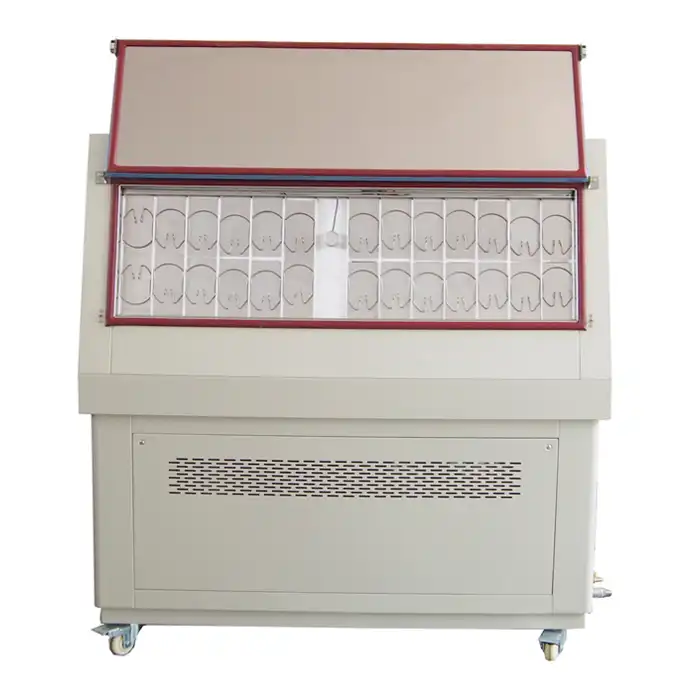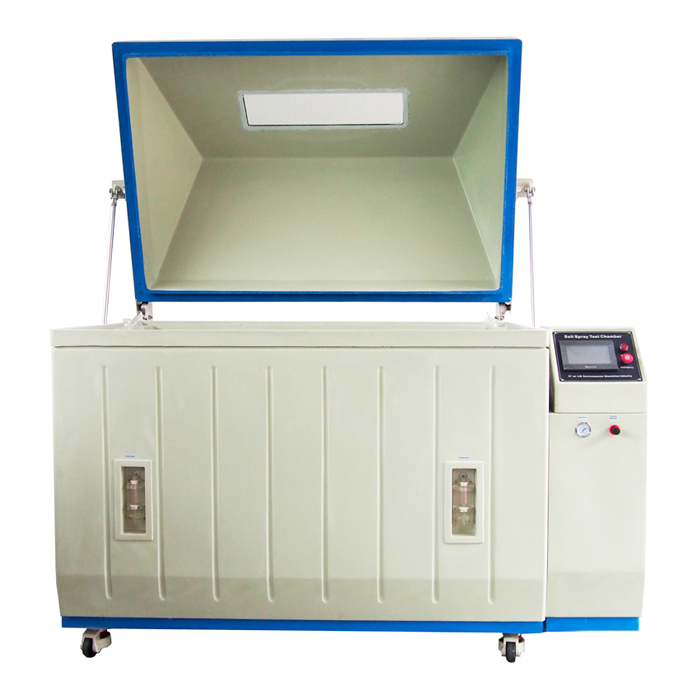What is salt spray method of corrosion testing?
Introduction
Corrosion is a pervasive challenge in industries ranging from automotive to aerospace, where materials must withstand harsh environmental conditions. The Salt Spray Method of corrosion testing is a pivotal technique utilized across industries to evaluate the resistance of materials and coatings against corrosion. By subjecting samples to a controlled environment of saline mist, this method simulates the corrosive effects materials would endure in real-world conditions. A salt spray corrosion chamber, also known as a salt fog chamber or salt spray test chamber, is a specialized apparatus used extensively in materials science and engineering to simulate and evaluate the effects of corrosive environments on various materials and coatings. This blog provides an in-depth exploration into how the Salt Spray Method functions, its adherence to industry standards, and its crucial role in ensuring material longevity and performance.
How does a salt spray corrosion chamber work?
Salt spray chambers consist of an enclosed space where a saline solution is atomized into a fine mist. This mist is typically composed of sodium chloride (NaCl) dissolved in water. The purpose of this mist is to replicate the corrosive effects of a salt-laden atmosphere, such as coastal or industrial environments.
The operational principles of salt spray chambers involve maintaining specific temperature, humidity, and salt concentration levels within the chamber. This controlled environment allows researchers and engineers to standardize test conditions according to established protocols such as ASTM B117 and ISO 9227. The salt spray corrosion test chamber's design ensures uniform distribution of the salt spray across all exposed surfaces of the test specimens, enabling consistent and reproducible results.
Components and Operation:
Enclosure and Nozzles: The chamber is made of corrosion-resistant materials like stainless steel to prevent contamination. Inside, specialized nozzles spray the salt solution uniformly over test specimens, ensuring consistent exposure.
Controlled Conditions: Temperature and humidity are closely monitored and controlled within the chamber. According to ASM International, maintaining a consistent temperature (usually between 35°C to 50°C) and humidity level ensures that test conditions adhere to established standards.
Exposure and Evaluation: Specimens are securely mounted on racks within the chamber to maximize exposure to the salt mist. Testing durations can vary but are standardized per ASTM B117 or ISO 9227 guidelines. During testing, sensors and monitoring systems track parameters like mist density and exposure time.Salt spray corrosion chambers are equipped with monitoring and control systems to regulate parameters like mist density, pH level of the salt solution, and exposure duration. Advanced chambers may also feature programmable cycles to simulate different environmental scenarios, aiding in comprehensive corrosion resistance testing.
Standards and Applications: The results obtained from salt spray testing are critical for various industries. For example, in the automotive sector, it helps evaluate the durability of vehicle components against road salt exposure. In aerospace, it assesses the corrosion resistance of aircraft parts to ensure safety and reliability.
What are the standards for salt spray corrosion testing?
Standardization is critical in salt spray corrosion testing to ensure reliability and comparability of test results across different laboratories and industries. Several international standards govern the procedures and conditions for conducting salt spray tests, including ASTM, ISO, and other regional standards bodies.
ASTM B117, titled "Standard Practice for Operating Salt Spray (Fog) Apparatus," is one of the most widely recognized standards for salt spray testing globally. It specifies detailed procedures for preparing specimens, operating the test apparatus, and interpreting test results. The standard outlines parameters such as test duration, temperature, solution composition, and evaluation criteria to maintain consistency in testing methodologies.
ISO 9227, "Corrosion tests in artificial atmospheres - Salt spray tests," is another prominent international standard that harmonizes salt spray testing practices worldwide. It provides additional guidelines on test conditions and sample preparation to ensure accurate assessment of materials' corrosion resistance under simulated environmental conditions.
Adhering to these standards not only ensures procedural rigor but also enhances the credibility and relevance of salt spray test results in assessing the performance and durability of materials in diverse applications.
Why is salt spray testing important for material durability?
Salt spray testing plays a pivotal role in evaluating the long-term durability and reliability of materials exposed to corrosive environments. Industries such as automotive, aerospace, marine, and construction rely on this method to select corrosion-resistant materials, validate coating systems, and improve product design. Salt spray corrosion test chamber is a very significant tool in testing.
The importance of salt spray testing lies in its ability to accelerate the natural corrosion processes that materials would experience over extended periods in service. By subjecting samples to accelerated conditions, manufacturers, and engineers can predict the onset and progression of corrosion, identify vulnerabilities in material compositions or coatings, and implement preemptive measures to enhance durability.
Moreover, salt spray testing provides quantitative data on corrosion rates, extent of damage, and failure modes, enabling informed decision-making in material selection and product development. It supports compliance with regulatory requirements and customer expectations for reliability and longevity in challenging environments.
Conclusion
In conclusion, the Salt Spray Method of corrosion testing remains indispensable in the realm of materials science and engineering. By understanding its operational principles, adherence to standards, and significance in evaluating material durability, stakeholders can leverage this method to mitigate corrosion risks and optimize performance across various industrial applications.
Salt spray corrosion chambers are indispensable tools in materials testing, providing valuable insights into the corrosion resistance and durability of materials under accelerated conditions. By simulating harsh environmental exposures, these chambers enable manufacturers, engineers, and researchers to develop and improve materials and coatings that can withstand the rigors of real-world applications. Adherence to standardized testing procedures ensures reliability and comparability of results, supporting informed decision-making and enhancing product performance and longevity across industries.
For more information about the salt spray method of corrosion testing, please contact us at 8888.
References
ASTM International. (n.d.). ASTM B117 - 19 Standard Practice for Operating Salt Spray (Fog) Apparatus. Retrieved from https://www.astm.org/Standards/B117.htm
International Organization for Standardization. (2017). ISO 9227:2017 Corrosion tests in artificial atmospheres - Salt spray tests. Retrieved from https://www.iso.org/standard/56141.html
Corrosionpedia. (2023). Salt Spray Test. Retrieved from https://www.corrosionpedia.com/definition/163/salt-spray-test
TÜV SÜD. (n.d.). Salt Spray Test (fogging test). Retrieved from https://www.tuvsud.com/en-cn/services/product-testing/salt-spray-test
NACE International. (n.d.). What is Corrosion? Retrieved from https://www.nace.org/resources/what-is-corrosion
PPG Protective & Marine Coatings. (n.d.). Understanding Salt Spray Testing. Retrieved from https://www.ppgpmc.com/Products/Overview/Understanding-Salt-Spray-Testing
Bowers, B. (2022). Importance of Salt Spray Testing in Aerospace. Retrieved from https://www.aerospacetestinginternational.com/features/importance-of-salt-spray-testing-in-aerospace.html
Tesla, N. (2023). Salt Spray Testing: Standards and Applications in Automotive Industry. Retrieved from https://www.automotivetestingtechnologyinternational.com/features/salt-spray-testing-standards-and-applications-in-automotive-industry
Metal Finishing. (2024). Salt Spray Testing for Coatings. Retrieved from https://www.metalfinishing.com/features/salt-spray-testing-for-coatings
American Galvanizers Association. (n.d.). Hot-Dip Galvanizing and Salt Spray Testing. Retrieved from https://galvanizeit.org/hot-dip-galvanizing/inspection-quality-control/salt-spray-testing






.webp)




